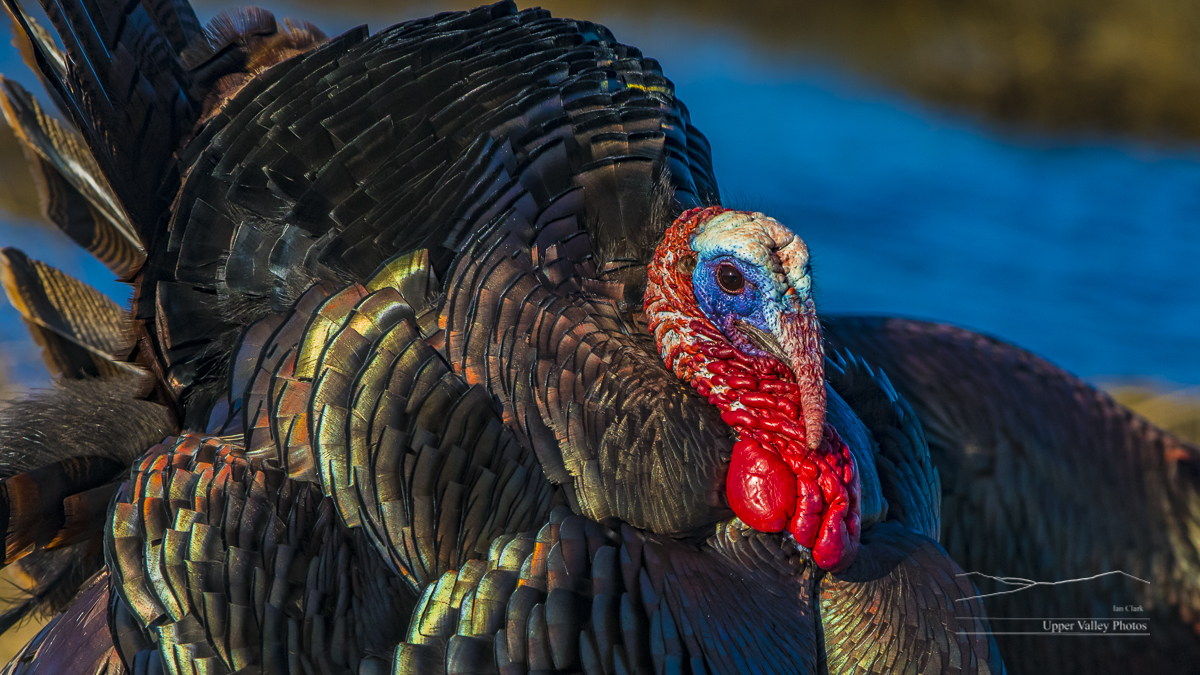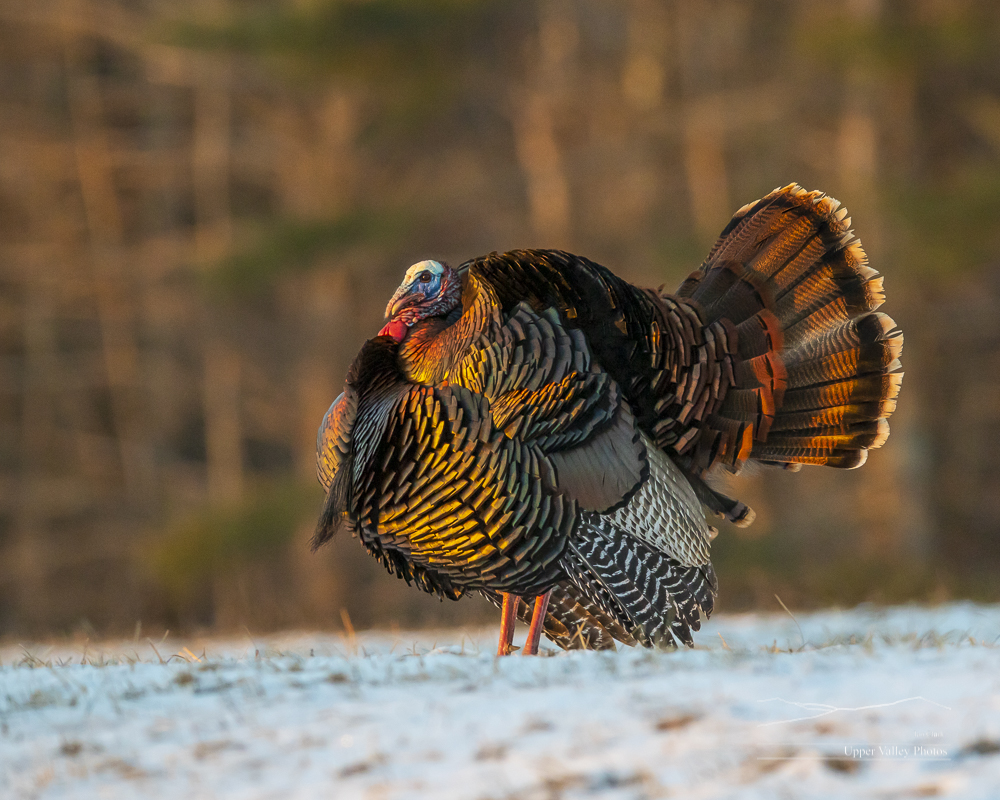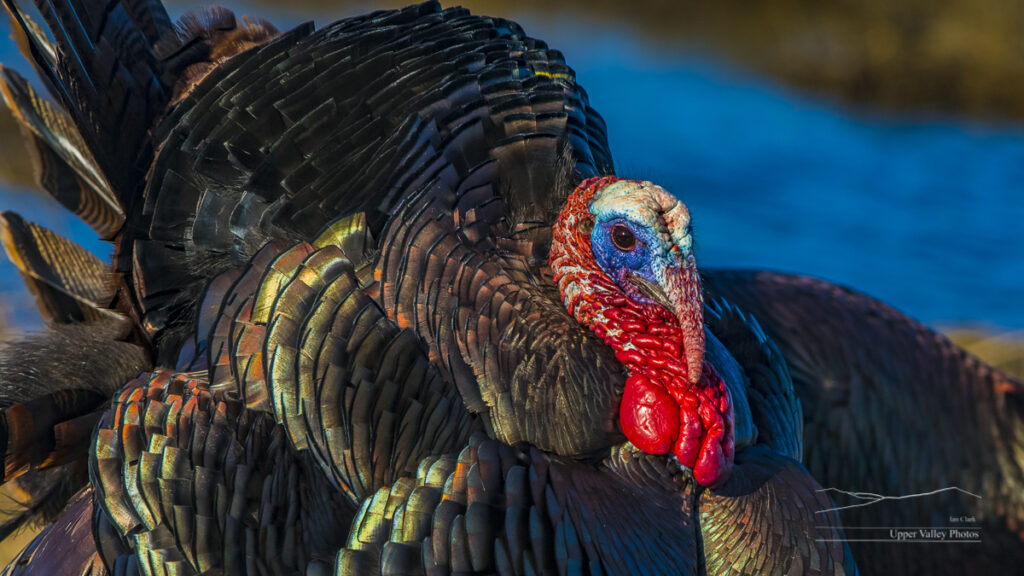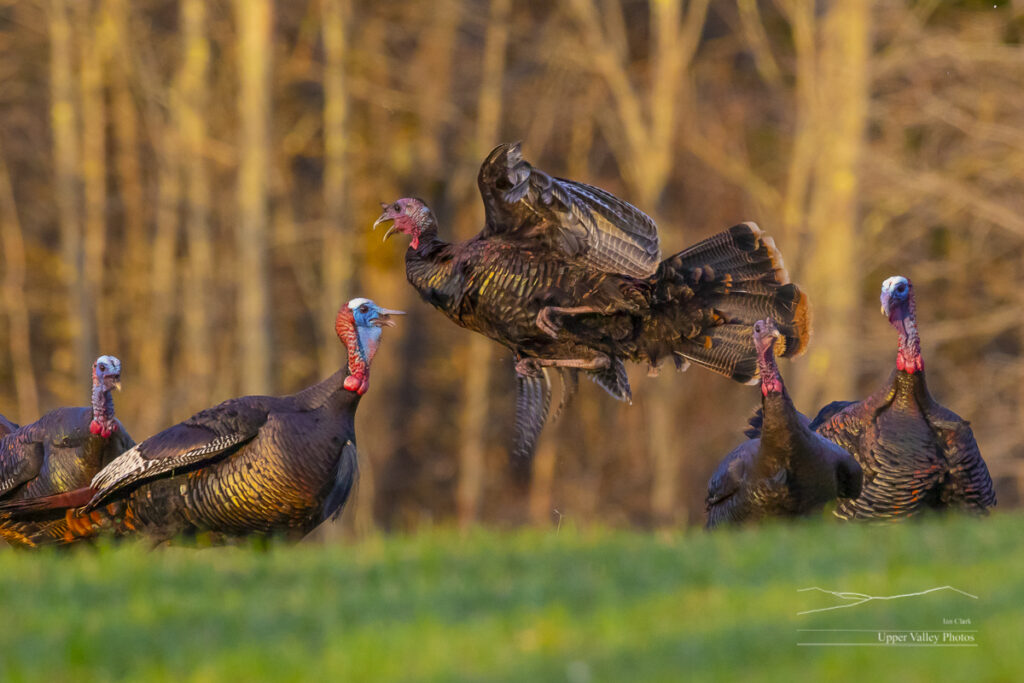Posts in Category: Game Birds
Turkey Shoot – Photographing Wild Turkeys





Wild turkeys are starting to strut here in Vermont. Strutting is a display by the males to attract the ladies. They’ll fan their tailfeathers and keep moving around to be in in front of the females. This is a great time to photograph them. Not only are the males showing their finery, but you’ll often see fights as the males try to drive each other away from the flock.
The light on turkeys makes or breaks the image. With low angle, early morning light, turkeys are iridescent and the male’s face and wattle are brightly colored. Wait a few minutes after sunup and they appear a drab brown. Shooting just after dawn is critical.
Finding turkeys is relatively easy. They’re sort creatures of habit. You’ll usually find a flock working through the same field(s) every morning. They roost in trees come dusk. You can hike along the edge of the field you’re planning to shoot the evening before to see where they’re roosting to give you an edge the next morning.
Turkeys are hunted regularly and are very wary of people. For the best photos, you’re going to need a blind. Fortunately, there are lots of blinds made for turkey hunters. They’re perfect for photography. If you have to hike in to your spot, a chair blind is easy to carry. If you’re shooting not far from your car, a larger tent style blind gives you more room. (Vermont is still chilly, having more room to pour some tea out of my Thermos is a big plus.)
You’ll want a relatively high, 1/1000th or faster, shutter speed to be ready when the kerfuffles start. Mounting your camera on a tripod with a ball or gimbal head saves the hassle of holding the camera and lets you pan to the action.
Be sure to check your local hunting laws, you don’t want to be in the field with hunters. If you’re on private land, you can usually coordinate with the landowner to keep you and the hunters apart.
So, get out and get some turkey pix. If you’re timing it right, you’ll be home early enough for a good breakfast.
